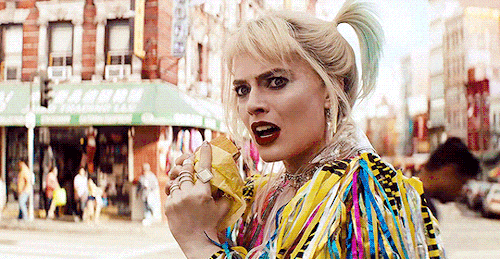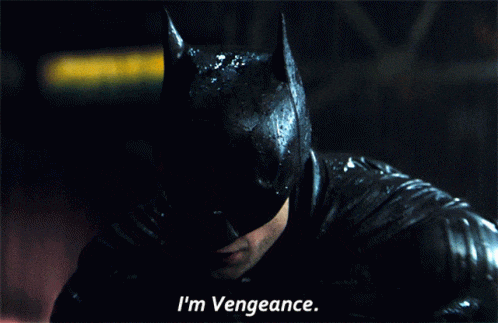The way the universe of DC Comics films is organized at Warner no longer has anything to do with the desire to copy Marvel and the studio seems -at last- to have found a profitable strategy for its superhero films. To analyse.
While The Batman haunts dark rooms like the streets of Gotham, a little update on Warner’s new strategy for its superheroic films adapted from DC Comics. How did they go from lagging studios to ultimately “bankable” films?
Reminder of problems
The Warner studio launched into connected universes in 2013, releasing Man of Steel by Zack Snyder with Henry Cavill and especially Batman V Superman (2016) with the appearance of members of the future Justice League. Already at the time, part of the public did not adhere to the feature film as it was presented in theaters. Some will see the film again from a better angle thanks to its three-hour director’s cut.
Suicide Squad (2016) follows. And things are starting to go wrong. Having found Batman V Superman too dark, and attempting to copy the surprise success of lighter Marvel films like Guardians of the Galaxy, the studio re-edited the director’s edit without his approval.
The project becomes a film with “pop” colors that clearly contrasts with what the first, much darker trailer suggested. Moreover, the wickedness of super-villains is all relative, and these two facts combined make David Ayer’s film a production with good box office figures (746.8 million for a budget of 175), but whose bad reception by the public completely loses Warner.
Warner Bros. Jared Leto as Joker in Suicide Squad
The international success of Wonder Woman gave the studio a breath of fresh air, which was short-lived. Indeed, the point of no return for Warner is the theatrical release of Justice League in 2017, officially signed Zack Snyder but nevertheless a studio film supervised by Joss Whedon. Image and tone are retouched, new scenes added, others cut, giving a film with a hybrid tone, promising in its plot but with a bitter taste. A taste of unfinished.
Moreover, the union of these superheroes is a failure at the box office with 657.92 million dollars reported worldwide for an estimated budget of 300. De facto, the DC connected universe sinks a little further into chaos.
Two attempts… and two successes!
Still, Aquaman hits screens in 2018 as the first DC feature to be released with one of the Justice League movie actors reprising his role, here Jason Momoa. The risk was there for Warner, who could have believed that the spectators would have abandoned this hero to his fate without moving to theaters.
However, the film exceeds $1 billion at the box office, a score not reached since 2013 by a live-action film adapted from DC Comics.
Despite this, the DC Universe is moribund. Confirmation comes when the public discovers the post-credits scene of Shazam, in which Superman is present, but his face is not shown because the studio does not know if Henry Cavill will remain the face of the Man of Steel. Moreover, the new superhero played by Zachary Levi does not attract crowds.
It was at the end of 2019 that Warner attempted a coup never before seen in the superhero genre. Giving a director carte blanche to make a movie about a DC character solo, disconnected from any other movie in that universe, past or future. It’s called Joker, and features Joaquin Phoenix as the crazy clown from the Batman universe. As usual, the actor prepares drastically and takes the role very seriously.
In the staging, we find Todd Philipps, rather known for his comedies Very Bad Trip, which gives the film a terrible darkness which does not harm its entries, quite the contrary, since like Aquaman, it also brings in a billion dollars.

Warner Bros.
Margot Robbie as Harley Quinn in Birds of Prey
On the other hand, it is interesting to note that Birds of Prey, very attached to the plot of Harley Quinn in Suicide Squad, and despite the popularity of Margot Robbie in the role, did not find its audience. From then on, Warner began to draw lessons from these observations and to reflect on this providential windfall of independent films.
(We are deliberately ignoring here the releases of Wonder Woman 1984 and The Suicide Squad, both released in full during the COVID-19 epidemic, in parallel in theaters and on the HBO Max platform and whose successes are difficult to quantify. figures are lacking on Zack Snyder’s director’s cut of Justice League, even though audience feedback has proven his version of the film to be highly anticipated).
The studio’s superhero revival
If Warner has abandoned its connected Justice League for the moment, it still believes in some of the heroes that have already been installed by Zack Snyder. Evidenced by the relentlessness of the studio to release a solo film on The Flash despite a wait of already 4 years (and it has just been postponed from this year to 2023). We will also see (for the last time) Ben Affleck as Batman.
Shazam 2, Black Adam, Wonder Woman 3, Aquaman 2 are also announced, but imagined – at least for now – much more as solo adventures disconnected from the films of the other heroes rather than as parts of a coherent whole. .
This is Warner’s new strategy: to multiply the “independent” stunts without trying to build a complex machinery within which everything responds with post-credits scenes announcing the next film in a common universe. In reality, each hero has his own universe, in which the other heroes do not have – for the moment – no right of citizenship.

Warner Bros.
Ezra Miller as Barry Allen, aka The Flash
Evidenced by this interview of the CEO of the film division of Warner Bros, Toby Emmerich, with Deadlinein which he holds a rather radical speech:
The secret of film production is quality. This is the best business strategy for feature films and superhero movies.
The movies don’t all have the same tone, aren’t related to other DC movies, and don’t have hidden details foreshadowing the next movie. Quality is the most important factor in a studio and the most important factor in influencing quality is choosing the right director.
In this case, Matt Reeves for The Batman, who signed a film with very few references and a post-credits scene which is not really one for the moment. We also see that Emmerich sends a fistful of sand in Marvel’s eyes by pointing out that Warner uses directors with visions, implying that the films produced by Kevin Feige have none, or less.

Warner Bros.
Batman version Robert Pattinson
Whether we agree or not with this spade, we must recognize that financially, Warner’s tactics finally seem to bear fruit. The Batman confirms the Aquaman/Joker test by currently counting 279.8 million dollars reported worldwide and the preparation of series derived from the film, proof of the contentment of the financiers at this stage of the release.
Are these Batman-like compartmentalized mini-universes the solution Warner was looking for to stand out and bounce back from the steamroller of Marvel films? The box office results of future DC films will be necessary to know if this movement initiated by the studio is confirmed over time, but one thing is certain: for the moment, it is a successful bet.
To go further in The Batman, see our interview with its director Matt Reeves:
